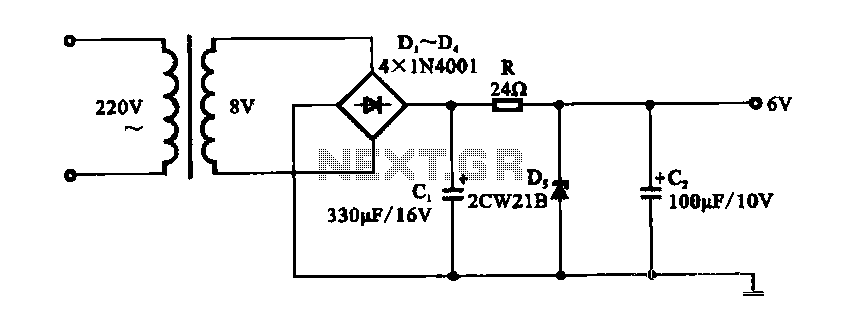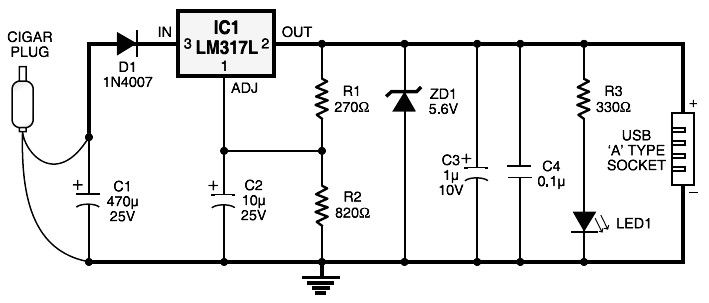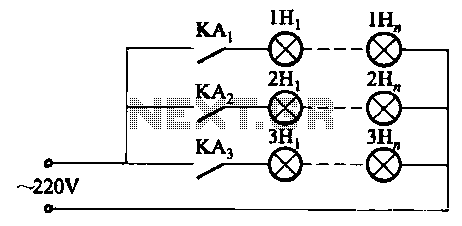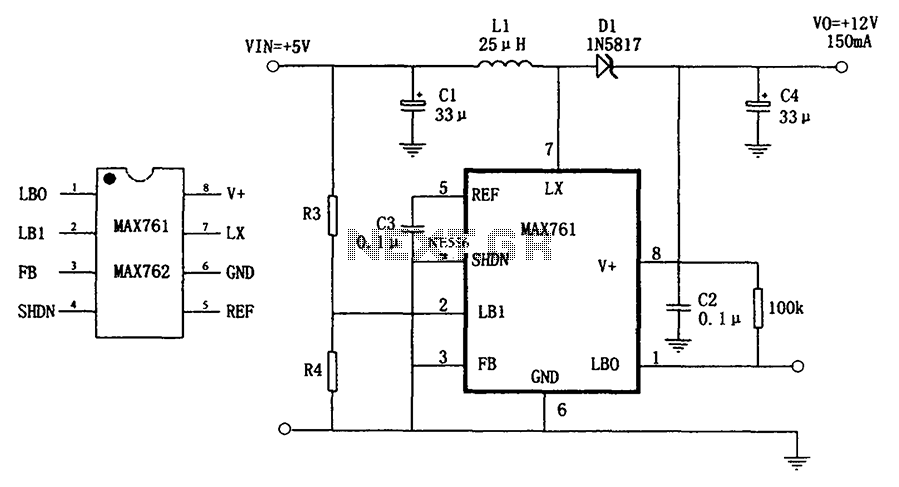
Auto Fuse for power supply
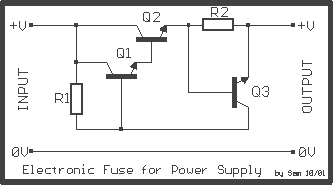
The power supply, with electronic stabilization - mainly those of laboratories - should be protected from overcurrent that emanates from short-circuits, erroneous association, or damage of repaired appliances. The circuit offers effective protection in power supply with output voltage up to 45V DC. Transistor Q3 is of type BC148, while the types of Q1-2, as well as R1-2, depend on the maximum current intensity, according to the table. The entry is connected to the output power supply. Under regular working conditions, Q2 turns on completely via R1-Q1 and functions in saturation. The output voltage is approximately 2V lower than the supply voltage. If the voltage drop across R2 reaches 0.7V due to a short-circuit, then Q3 conducts, and the voltage between the collector and emitter is 0.3V. Q1-2, however, will only drive when the voltage between the base of Q1 and the emitter of Q2 is at least 1.4V. In the case of overcharge, this voltage is 0.7V + 0.3V = 1V, resulting in the circuit being regulated automatically to the predetermined maximum current intensity. The transistors listed can be replaced with corresponding types, provided they meet the required characteristics.
The described power supply circuit is designed to provide stable output voltage while ensuring protection against overcurrent conditions. It operates with a maximum output voltage of 45V DC, making it suitable for laboratory applications where precise voltage regulation is essential. The core of the circuit involves three transistors: Q1 and Q2 for current regulation, and Q3 for overcurrent protection.
Transistor Q2 is the primary regulating element, which enters saturation under normal operating conditions, allowing current to flow through R1, which acts as a base resistor for Q1. This configuration ensures that Q1 remains in an 'on' state, enabling the circuit to maintain the desired output voltage. The output voltage is designed to be approximately 2V less than the input voltage, ensuring that the circuit operates efficiently.
In the event of a short circuit, the voltage drop across R2 increases to 0.7V, triggering Q3 to conduct. This action reduces the voltage across the collector-emitter junction of Q3 to 0.3V, effectively limiting the output voltage and protecting the circuit from excessive current flow. The interaction between Q1 and Q2 is crucial, as Q1 will only activate when the voltage between its base and the emitter of Q2 exceeds 1.4V. Under overcurrent conditions, the combined voltage drop across R2 and Q3 ensures that the system remains within safe operating limits.
The circuit also features a table specifying the values of resistors R1 and R2 and the transistor types Q1, Q2, and Q3, tailored to different maximum current intensities (Imax). This design allows for flexibility in component selection, as long as the replacements match the electrical characteristics necessary for the circuit's operation. Overall, this power supply circuit is a robust solution for laboratory environments, providing both voltage stabilization and overcurrent protection.The power supply, with electronic stabilisation - mainly those of laboratories - it should they are protected from ??over current?? that emanates from short-circuits, erroneous association or damage of repaired appliance. The circuit offers effective protection in power supply with output voltage through to 45V DC. Transistor Q3 of is type in all cases BC148, while the types of Q1-2, as well as R1-2, depend from the biggest intensity of current, according to the table.
The entry is connected in the exit power supply. Under regular conditions of work, the Q2 turn on, completely via the R1-Q1 and functions in the saturation. The output voltage is 2V roughly lower than the voltage of supply. If grow the dip of voltage, in the R2 at 0.7V. because short-circuit, then conduct the Q3 and the voltage between the collector and his emitter is 0.3V. the Q1-2, however is driver only when his voltage between the base of Q1 and emitter of Q2 is 1.4V at least.
But in case of overcharge, this voltage is 0.7V+0.3V=1V, with result the circuit is regulated automatically in the predetermined biggest intensity. The transistors that I give in the table can be replaced with corresponding, it is enough they suit their characteristics.
Imax (A) R1 (?) R2 (?) Q1 Q2 Q3 5 100 0.12 2?1613 2N3055 BC148 0.5 1000 1 BC107 2N1613 BC148 0.1 4700 4.7 BC107 2N1613 BC148 🔗 External reference
The described power supply circuit is designed to provide stable output voltage while ensuring protection against overcurrent conditions. It operates with a maximum output voltage of 45V DC, making it suitable for laboratory applications where precise voltage regulation is essential. The core of the circuit involves three transistors: Q1 and Q2 for current regulation, and Q3 for overcurrent protection.
Transistor Q2 is the primary regulating element, which enters saturation under normal operating conditions, allowing current to flow through R1, which acts as a base resistor for Q1. This configuration ensures that Q1 remains in an 'on' state, enabling the circuit to maintain the desired output voltage. The output voltage is designed to be approximately 2V less than the input voltage, ensuring that the circuit operates efficiently.
In the event of a short circuit, the voltage drop across R2 increases to 0.7V, triggering Q3 to conduct. This action reduces the voltage across the collector-emitter junction of Q3 to 0.3V, effectively limiting the output voltage and protecting the circuit from excessive current flow. The interaction between Q1 and Q2 is crucial, as Q1 will only activate when the voltage between its base and the emitter of Q2 exceeds 1.4V. Under overcurrent conditions, the combined voltage drop across R2 and Q3 ensures that the system remains within safe operating limits.
The circuit also features a table specifying the values of resistors R1 and R2 and the transistor types Q1, Q2, and Q3, tailored to different maximum current intensities (Imax). This design allows for flexibility in component selection, as long as the replacements match the electrical characteristics necessary for the circuit's operation. Overall, this power supply circuit is a robust solution for laboratory environments, providing both voltage stabilization and overcurrent protection.The power supply, with electronic stabilisation - mainly those of laboratories - it should they are protected from ??over current?? that emanates from short-circuits, erroneous association or damage of repaired appliance. The circuit offers effective protection in power supply with output voltage through to 45V DC. Transistor Q3 of is type in all cases BC148, while the types of Q1-2, as well as R1-2, depend from the biggest intensity of current, according to the table.
The entry is connected in the exit power supply. Under regular conditions of work, the Q2 turn on, completely via the R1-Q1 and functions in the saturation. The output voltage is 2V roughly lower than the voltage of supply. If grow the dip of voltage, in the R2 at 0.7V. because short-circuit, then conduct the Q3 and the voltage between the collector and his emitter is 0.3V. the Q1-2, however is driver only when his voltage between the base of Q1 and emitter of Q2 is 1.4V at least.
But in case of overcharge, this voltage is 0.7V+0.3V=1V, with result the circuit is regulated automatically in the predetermined biggest intensity. The transistors that I give in the table can be replaced with corresponding, it is enough they suit their characteristics.
Imax (A) R1 (?) R2 (?) Q1 Q2 Q3 5 100 0.12 2?1613 2N3055 BC148 0.5 1000 1 BC107 2N1613 BC148 0.1 4700 4.7 BC107 2N1613 BC148 🔗 External reference

